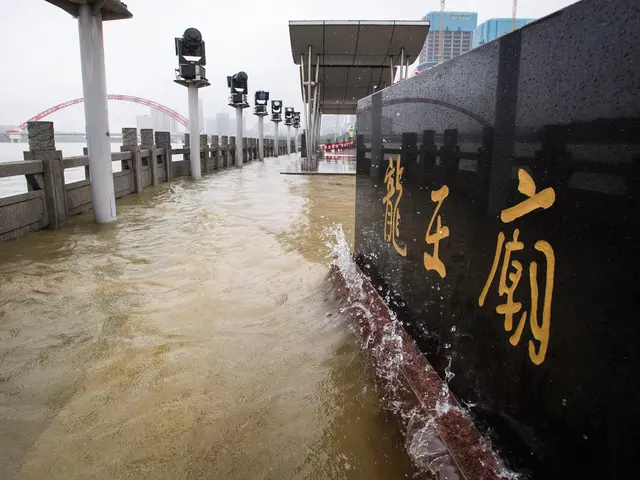On the bank of Poyang Lake, floodwater has swallowed the iron gate, the windows, and the wooden doors of the first floor of the Gutang branch of Jiujiang Customs, an ancient customs office put on a national protection list just last year.
The floods have also washed up trash bins, plastic bottles, and tree branches onto the doorsteps leading to the backyard of this cultural site in Lianxi District of Jiujiang City, east China's Jiangxi Province.
China has entered its rainy season. Since June, continuous downpours have lashed large parts of southern China, and the waters of many rivers in the affected regions have exceeded warning levels. The northern stretches of Jiangxi Province have experienced heavy downpours since July 6, with water rising significantly in local rivers and lakes.
The floodwater has inundated a lot of cultural relics.
According to the National Cultural Heritage Administration (NCHA), more than 500 unmovable cultural relics have suffered damage due to recent floods in southern China as of Thursday.
Regions along the Yangtze River have seen the most severe relics damage, said Song Xinchao, deputy head of the NCHA, noting that several ancient bridges, city walls, and buildings were destroyed.
Song said the NCHA has allocated 3.5 million yuan (about 500,000 U.S. dollars) in funds to affected areas for the relics rescue work, calling on local governments and relevant departments, as well as the public, to support the work.
On July 12, the water level at Poyang Lake, China's largest freshwater lake, exceeded the guaranteed mark of 22.43 meters, posing a grave danger to the site of the Gutang branch of Jiujiang Customs.
"This year, the floodwater is really strong, especially at Poyang Lake," said Zhu Ping, with the district cultural relics protection administration. "If the site is submerged in water for too long, it will decay."
The site is located in the township of Gutang, about 13 km from the city proper of Jiujiang. It sits on the foothill of the Gutang Mountain, with Poyang Lake right on its east side.
The site consists of three buildings, including a taxation office, an administration office, and a dormitory building. Together they cover an area of 2,028 square meters. Its taxation history goes back to 1723, and it ceased to function in 1931.
The site is the only well-preserved historic customs office in Jiangxi, with considerable historic and artistic value. In 1987, it was listed as a provincial-level cultural relic under protection.
"The buildings attract many tourists from the city," Zhu said. "Many come here to take pictures, or appreciate the sense of history it exudes."
However, the floods this year not only drove away tourists, but also threatened to swallow the site.
"In the past, the road in front of the two-meter-tall iron gate allowed two cars to pass simultaneously," Zhu said. "But now the road is deep in water."
A guardian in his 70s once kept watch of the site, but authorities moved him to the city to avoid the floodwater, Zhu said.
The water also inundated the tourists' platform extending into the lake, which was used to allow visitors to get close to the water and take pictures.
"The road and the platform are now two to three meters underwater," Zhu said.
The most dangerous scenario happened on July 12, Zhu said.
"The water gushed to the windows inside the courtyard that day and almost went into the exhibition room," he added. "Some parts of the buildings have been in water for half a month now."
Even people in charge of the site, like Zhu, have to take a boat to reach the site these days.
Local authorities plan to apply for more funds to repair the damaged parts. "After the floodwater retreats, we will ask professional agencies to evaluate the damages, especially the damage to the walls," Zhu said.
"We are thinking about creating a huge door against the floods," he said. "We don't want history to crumble in ruins."
 简体中文
简体中文

